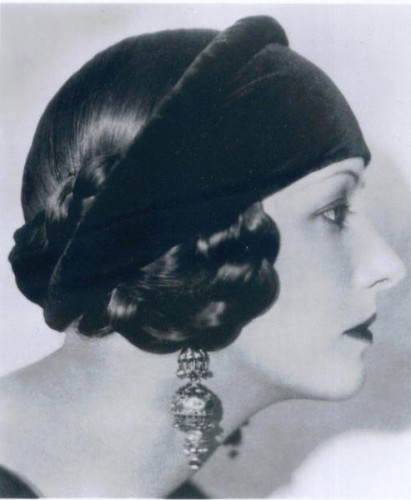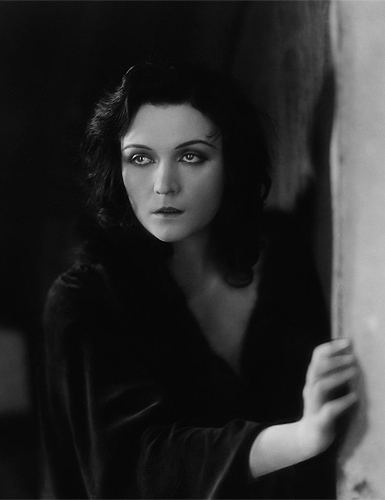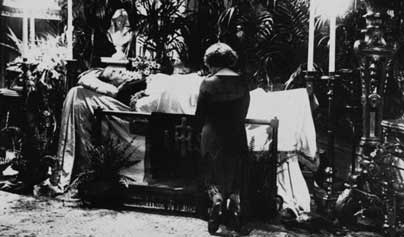The “Latin Lover” and His Enemies
Rudolph Valentino fought a long battle against innuendo about his masculinity right up until he died. But now he seems to have won
/https://tf-cmsv2-smithsonianmag-media.s3.amazonaws.com/filer/ValentinoandJadaan-fixed.jpg)
With the Roaring Twenties in full swing and the first talkies on the horizon, Hollywood’s booming film industry already had its share of bankable stars—Charlie Chaplin, Greta Garbo, Douglas Fairbanks, Buster Keaton. But in the summer of 1926, an Italian immigrant named Rodolfo Alfonso Rafaello Pierre Filibert Guglielmi di Valentina D’Antonguolla would join them. Known as the “Latin Lover,” Rudolph Valentino would, by summer’s end, single-handedly change the way generations of men and women thought about sex and seduction.
It’s sad Valentino never live to see that autumn. And it’s sadder that he spent his final weeks engaged in an indecorous feud with an anonymous editorialist who had questioned his masculinity and blamed him for America’s “degeneration into effeminacy.”
Born in Castellaneta, Italy, in 1895, Valentino arrived at Ellis Island in 1913, at the age of 18. He lived on the streets and in Central Park until he picked up work as a taxi dancer at Maxim’s Restaurant-Caberet, becoming a “tango pirate” and spending time on the dance floor with wealthy women who were willing to pay for the company of exotic young men.
Valentino quickly befriended a Chilean heiress, which might have seemed like a good idea, but she was unhappily married to a well-connected businessman named John de Saulles. When Blanca de Saulles divorced her husband in 1915, Valentino testified that he had evidence that John de Saulles had been having multiple affairs, including one with a dance partner of Valentino’s. But his refined, European and youthful appearance at the trial had some reporters questioning his masculinity in print, and John de Saulles used his clout to have the young dancer jailed for a few days on a trumped-up vice charge. Not long after the trial, Blanca de Saulles shot her husband to death over custody of their son, and Valentino, unwilling to stick around for another round of testimony and unfavorable press, fled for the West Coast, shedding the name Rodolpho Guglielmi forever.
In California, Valentino began landing bit parts in films and, as he did in New York, building a clientele of older wealthy women who would pay for dance instruction. So charming was the young Italian that he would often show up at movie auditions driving fancy cars his clients had lent him. Impulsively, he married actress Jean Acker, but a regretful (and lesbian) Acker locked him out of their hotel room on their wedding night. She quickly sued for divorce.
By 1921, Valentino was starring in The Four Horsemen of the Apocalypse, which became one of the highest-grossing films of the silent era. Also that year, he was cast as Sheik Ahmed Ben Hassan in The Sheik—another wildly successful film, which would define Valentino’s image as a brooding but irresistible lover. It was an image he would despise.
In 1922, a writer named Dick Dorgan opined, in Photoplay magazine, opined that , “the Sheik is a bum Arab, that he is really an Englishman whose mother was a wop or something like that.” Valentino was infuriated by the insult to his mother and tried to have Dorgan banned from the studio. He also swore he would kill the writer if he saw him. The magazine apologized and promised some favorable pieces in the future, but a few months later, it published Dorgan’s “A Song of Hate,” in which he railed against Valentino’s “Roman face,” his “patent leather hair,” and his ability to make women dizzy. The article was somewhat good-natured—a common man’s jeremiad against a guy who danced too well and was too good-looking—but Valentino resented its references to his long eyelashes and the earrings he wore in films.
Valentino’s next few films performed erratically at the box office, and contract disputes with various studios forced him out of the movie business for a time. In 1922, he married Natacha Rambova, a costume designer, artistic director and occasional actress, but stood trial on bigamy charges because he hadn’t yet divorced Acker. He and Rambova had to have their marriage annulled; in March 1923 they remarried legally.
To make money until he was free to sign a new studio deal (and to pay off Acker), Valentino joined a dance tour throughout the U.S. and Canada. Sponsored by Mineralava beauty products, Valentino and Rambova performed as dancers and spokespersons, and Valentino judged beauty contests. He returned to films with the title role in Monsieur Beaucaire in 1924, under a new contract with Ritz-Carlton Pictures. Although the Louis XV drama was fairly successful, Valentino had to wear heavy makeup and ruffled costumes in an overtly feminized role. The actor, ever sensitive about his masculinity, was determined to be more careful about the roles he chose. He and Rambova would divorce in 1925, leading to public speculation that Valentino was a homosexual and that he had been engaged in “lavender marriages” of convenience to hide it. There is no definitive evidence in any credible biographies written of the two that either Valentino or Rambova was gay; rather, the speculation reflected contemporary sterotypes and prejudices, and was no doubt inspired by Valentino’s personal style and refined European tastes. Simply put, the man dubbed the “Latin lover” by the studios seems to have sought long-term relationships with women.
In early 1926, Valentino joined United Artists at the urging of Chaplin and Fairbanks. Mired in debt, he was practically forced into making a sequel to The Sheik. Though women continued to swoon over him, and some men imitated his mannerisms and slick-backed hair (they became known as “Vaselinos”), many more men grew skeptical of the foreign-born actor. Fairbanks was dashing and unquestionably masculine, but Valentino, with his dandy clothes, his wristwatch and a slave bracelet?
Photoplay published yet another piece, this one by Herbert Howe, that described Valentino’s his influence on leading men after his stellar tango in The Four Horsemen of the Apocalypse like this: “The movie boys haven’t been the same,” Howe wrote. “They’re all racing around wearing spit curls, bobbed hair and silk panties.… This can’t keep up. The public can stand just so many ruffles and no more.”
But it was the Chicago Tribune that really set Valentino off. On July 18, 1926, the paper ran an unsigned editorial under the headline “Pink Powder Puffs” that blamed Valentino for the installation of a face-powder dispenser in a new public men’s room on the city’s North Side:
A powder vending machine! In a men’s washroom! Homo Americanus! Why didn’t someone quietly drown Rudolph Guglielmo , alias Valentino, years ago?… Do women like the type of “man” who pats pink powder on his face in a public washroom and arranges his coiffure in a public elevator?… Hollywood is the national school of masculinity. Rudy, the beautiful gardener’s boy, is the prototype of the American male.
Valentino seethed at the editorial’s insinuations and ridicule. Since The Son of the Sheik was about to open, Oscar Doob, the film’s press agent, suggested that Valentino challenge the “Pink Powder Puffs” writer to a duel. Valentino sent his dare to the Chicago Herald-Examiner, the Tribune’s competitor: “To the man (?) who wrote the editorial headed ‘Pink Powder Puffs’ in Sunday’s Tribune, I call you in return, a contemptible coward and to prove which of us is a better man, challenge you to a personal test.” Noting that a duel would be illegal, Valentino said he would be happy to settle things in a boxing ring. And while Doob was immensely pleased with the publicity, he had no doubt that Valentino was “burned up” about the editorial.
“It’s so unfair. They can say I’m a terrible actor if they like, but it’s cowardly and low to hold me up as a laughing stock and make fun of my personal tastes and my private life,” Valentino told a Herald Examiner reporter. “This man calls me a ‘spaghetti-gargling gardener’s helper.’… As for being a gardener’s helper, I specialized in college in landscape gardening because in Italy, that is as fine an art as architecture or painting.”
The Tribune editorial writer did not come forward, but the actor traveled to New York and arranged to have boxing lessons from his friend Jack Dempsey, the heavyweight champion. Valentino was actually quite fit, and Dempsey tried to help, getting in touch with sportswriter Frank “Buck” O’Neil. “Listen, O’Neil,” Dempsey told him, “Valentino’s no sissy, believe me…. He packs a pretty mean punch.”
“Cut the crap,” O’Neil told him. “I don’t buy it, and neither does anyone else.” O’Neil then volunteered to take on Valentino in the ring, and the actor quickly agreed to fight him the following afternoon on the roof of the Ambassador Hotel. The next morning, reporters arrived at Valentino’s suite, only to see him decked out in an “orchid bathing suit and lavender lounging robe.”
“I’m going back to Chicago and I’ll have satisfaction,” Valentino told them, still incensed over the “Pink Powder Puffs” editorial. Privately, reporters marveled at Valentino’s bulging biceps and wondered what the star would do if he found out the editorial writer was a woman.
Valentino and O’Neil met on the roof, with reporters and photographers attending, and despite O’Neil’s promise that he would not hurt the star, he popped Valentino on the chin with a left. The actor responded by dropping his larger opponent with a left of his own. Somewhat stunned, Valentino apologized and helped the writer to his feet.
“Next time Jack Dempsey tells me something, I’ll believe him,” O’Neil told reporters. “That boy has a punch like a mule’s kick. I’d sure hate to have him sore at me.”
Still, the match proved nothing, and in the coming days, Valentino continued to fume about pink powder puffs. The more he mentioned the editorial to reporters, the more he invited the judgment that he must be hiding something. Valentino even met with the writer H.L. Mencken for advice, but when Mencken told him to ignore the taunts, the actor ignored him instead. Mencken would later write, “Here was a young man who was living daily the dream of millions of other young men. Here was one who was catnip to women. Here was one who had wealth and fame. And here was one who was very unhappy.”
In late July, Valentino attended the New York premiere of The Son of the Sheik. The temperature was close to one hundred degrees, but a mob of thousands formed around the theater, and as Valentino tried to make his way out of Times Square they ripped at his clothes. He escaped sufficiently intact to read about the melee in the next morning’s New York Times review of his film. More important to Valentino, however, was that the review said the film was full of “desert rough stuff and bully fights” and “leaves no doubt” about his masculinity. Referring to the “Pink Powder Puff” editorial, the reviewer warned any writer to think twice before accepting Valentino’s challenge, as “the sheik has an arm that would do credit to a pugilist and a most careless way of hurling himself off balconies and on and off horses. One leap from a balcony to a swinging chandelier is as good as anything Douglas Fairbanks ever did.”
The film was a hit, and the whispering about the star’s masculinity began to fade. As the sheik, he still appeared to be wearing eye shadow, and perhaps his lips bore a slightly darker stain of rouge, but after all, he was in show business.
Two weeks later, Valentino collapsed in his suite at the Ambassador and was taken to a hospital. After emergency surgery for a ruptured appendix, his doctors were hopeful he would recover. Then he developed pleuritis in his left lung and was in severe pain. At one point, he asked a doctor, “Am I still a pink powder puff?” Some reporters and readers were convinced that the actor’s hospitalization and the daily updates on his condition amounted to yet another publicity stunt. But on August 23, Rudolph Valentino slipped into a coma and died just hours later, surrounded by hospital staff.
On the news of his death, more than 100,000 people gathered on the streets in chaos outside the Frank Campbell Funeral Home. Flappers tore at their own clothes, clutched at their chests and collapsed in the heat. The New York Police Department tried to bring the order to the mob, and there were reports of despondent fans committing suicide. Inside the funeral home, four Black Shirt honor guards, supposedly sent by Benito Mussolini, stood nearby in stark tribute to the fallen star. (It was later learned that the men were actors, hired by the funeral home in, yes, a publicity stunt.)
The Polish actress Pola Negri, who had been having an affair with Valentino, fainted over his coffin. Upon reviving, she announced that she was to have been his third wife and quickly claimed the role of the dead star’s “widow.” For the funeral, she sent a massive floral display with thousands of blood-red roses surrounding white blooms that spelled out “POLA.” His body traveled back to the West Coast on a funeral train, and he was laid to rest in Hollywood.
The hysteria following Valentino’s death did not abate, and when The Son of the Sheik was released nationally months later, it was acclaimed as one of his best movies—a swan song of masculinity. Rumors that he actually died by the gun of a jealous husband or scorned lover kept the tabloids in business. And for decades, a veiled woman in black arrived at Valentino’s Hollywood tomb on the anniversary of his death to place twelve red roses and one white one on his grave. Once it was learned to be yet another press agent’s stunt, competing ladies in black began arriving at the tomb, knocking roses to the ground as they scuffled for position in front of newspaper photographers.
Whether the quality of Valentino’s voice would have killed his career in talkies is a subject of endless debate. Some say his accent was too thick, others who knew him well say his rich, husky baritone would only have helped him reach even greater heights of fame. But nearly a century after he arrived on these shores, his very name remains tantamount to a male seducer of women. In that sense, his work outlasted the biases of his time.
Sources:
Books: Allan R. Ellenberger, The Valentino Mystique: The Death and Afterlife of the Silent Film Idol, McFarland & Co. Inc. Pub, 2005. Jeanine Basinger, Silent Stars, Knopf, 1999. Michael Ferguson, Idol Worship: A Shameless Celebration of Male Beauty in the Movies, StarBooks Press, 2005.
Articles: “Valentino Still Irate,” New York Times, July 20, 1926. “Why Wasn’t He Drowned Years Ago, Asks Article,” Boston Globe, July 21, 1926. “Valentino Challenges Editor to Fight Duel,” Hartford Courant, July 21, 1926. “Pola Sobs Out Grief During Studio Rests,” Boston Globe, August 22, 1926. “Sheik of the Movies, Wearing Hospital Nightshirt, Beseiged by Worshipping Fans and Press Agents, Even in Grave Illness,” Boston Globe, August 22, 1926. “Many Hurt in Mad Fight to Pass Valentino Bier,” Boston Globe, August 25, 1926. “Pola Negri Prostrated by News of Valentino’s Death,” Boston Globe, August 25, 1926. “Valentino Passes with No Kin At Side; Throngs in Street,” New York Times, August 24, 1926. The Rudolph Valentino Society, http://rudolphvalentino.org/index.html. “Celebrities of the 20s: Rudolph Valentino,: by Anthony Ehlers, http://raesummers.wordpress.com/2011/01/10/celebrities-of-the-20s-rudolf-valentino/.
/https://tf-cmsv2-smithsonianmag-media.s3.amazonaws.com/accounts/headshot/gilbert-king-240.jpg)




/https://tf-cmsv2-smithsonianmag-media.s3.amazonaws.com/accounts/headshot/gilbert-king-240.jpg)